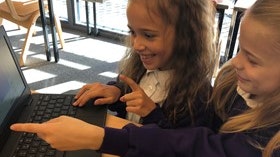Homepage
•
Learning Library
•
Blog
•
Build your own Flappy Bird to teach history and coding
Expand breadcrumbs
Expand breadcrumbs
- Learning Library
- Blog
- Build your own Flappy Bird to teach history and coding
- Homepage
- •
- Learning Library
- •
- Blog
- •
- Build your own Flappy Bird to teach history and coding
Build your own Flappy Bird to teach history and coding
By Amelia Archer
October 30, 2018








